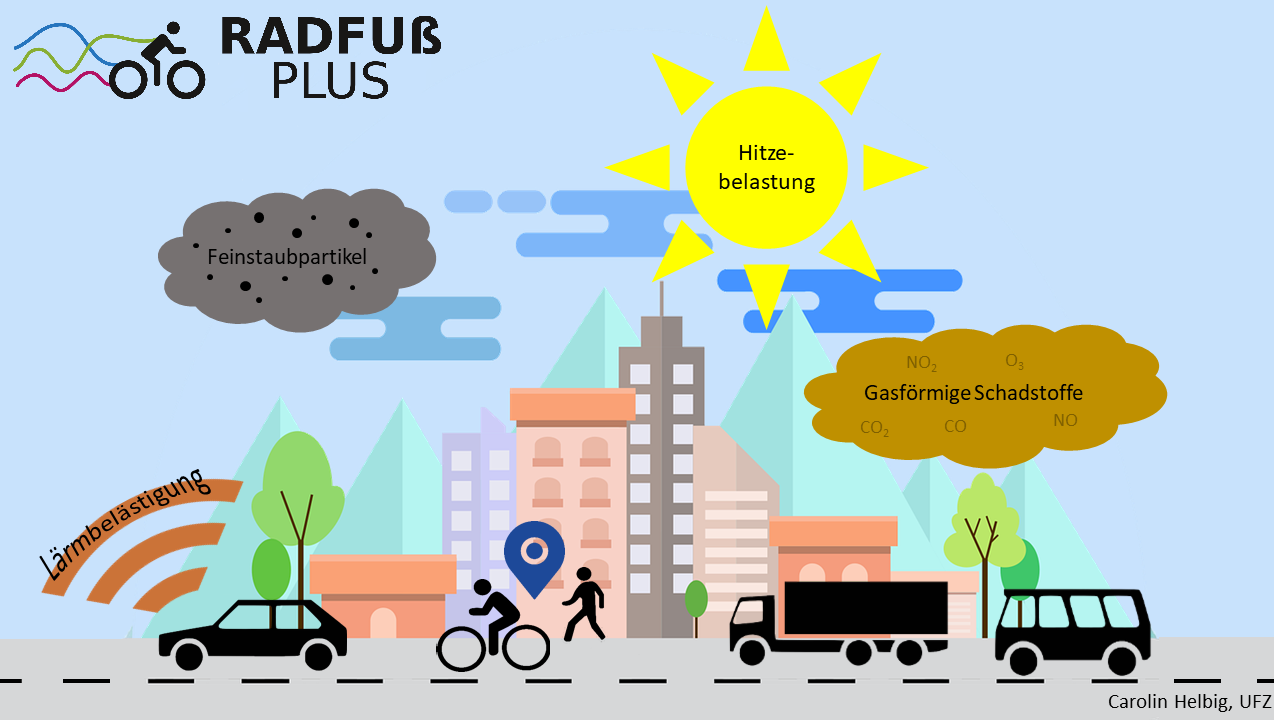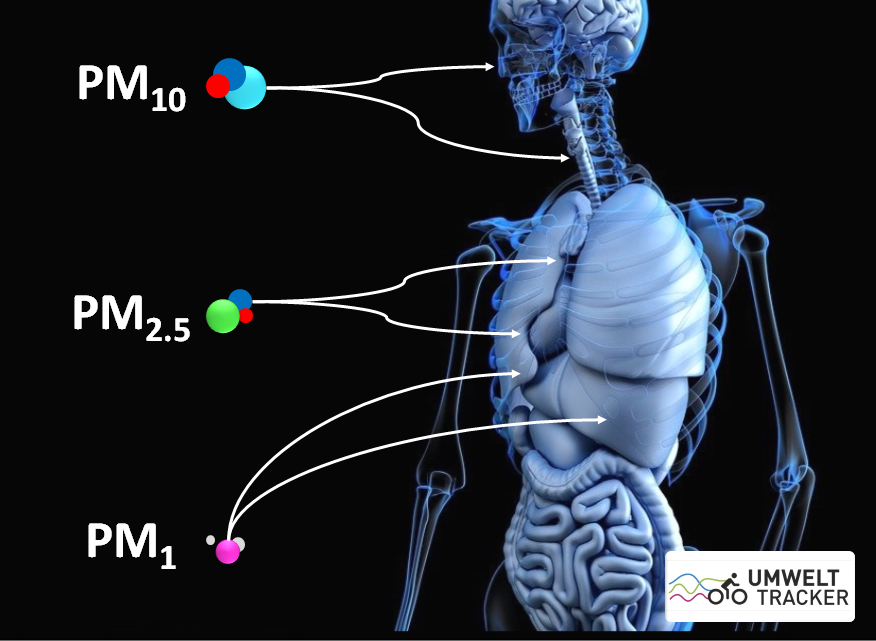Environmental Stressors

Air Pollution
Traffic, industry and agriculture are the main sources of air pollution in cities. The most commonly studied air pollutants related to personal exposure are particulate matter (PM), nitrogen oxides (NOx), carbon dioxide (CO2), ozone (O3), black carbon (BC) and ultrafine particles (UFP).
In order to limit human exposure to air pollutants, the European Commission provides a legal framework (Richtlinie 2008/50 / EG), that sets average limit values (hourly to annual), which have been binding throughout Europe since 2010.
Studies show that stationary measurements gather representative concentrations only for the location of the measurement and its immediate surroundings (Measured values from Station of Leipzig-Mitte). In contrast, mobile person-based measurements using wearables record the exposure precisely at the times and locations where a person is.
A distinction is made between three sizes of particulate matter pollution: PM1, PM2.5, PM10. Basically, the smaller the particle size, the deeper the particles can get into our respiratory system and can cause negative health effects. Large particles (PM10) can be deposited in the upper respiratory tract and medium particles (PM2.5) can be deposited in the lower respiratory tract. Ultrafine particles (PM1) can enter the bloodstream and be deposited in the liver, spleen or brain. (Falcon-Rodriguez et al. 2016)
 Größe und Dynamik von Partikeln in der Lunge und anderen Geweben
Größe und Dynamik von Partikeln in der Lunge und anderen Geweben
Noise Pollution
Noise is perceived subjectively in different ways and depends, among other things, on personal habits, frequency and hearing ability. Nevertheless, the strength of the sound can be measured objectively in the form of the sound pressure level (in decibels). You will use the sensor to measure the sound level that reaches you on your route (the so-called sound immission). This differs from the sound emitted by a source (known as sound emission).
 Typische Beispiele für eine bestimmte Lautstärke
Typische Beispiele für eine bestimmte Lautstärke
Heat Load
With the integrated temperature sensor, you will measure the ambient temperature on your routes. These values depend on the weather conditions. In our further research work, all measurements will be analyzed on a small scale and at different times of the day, taking into account the influence of the weather. We are particularly interested in whether and where there are relevant temperature differences in the city.
 Belastungsstufen nach Temperatur
Belastungsstufen nach Temperatur

